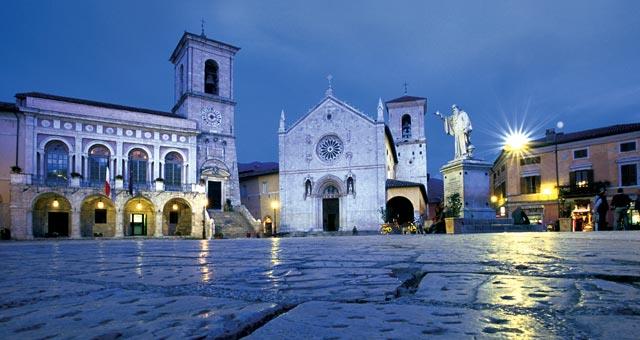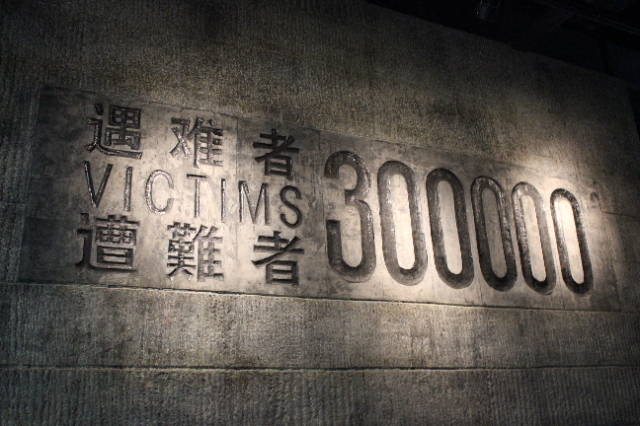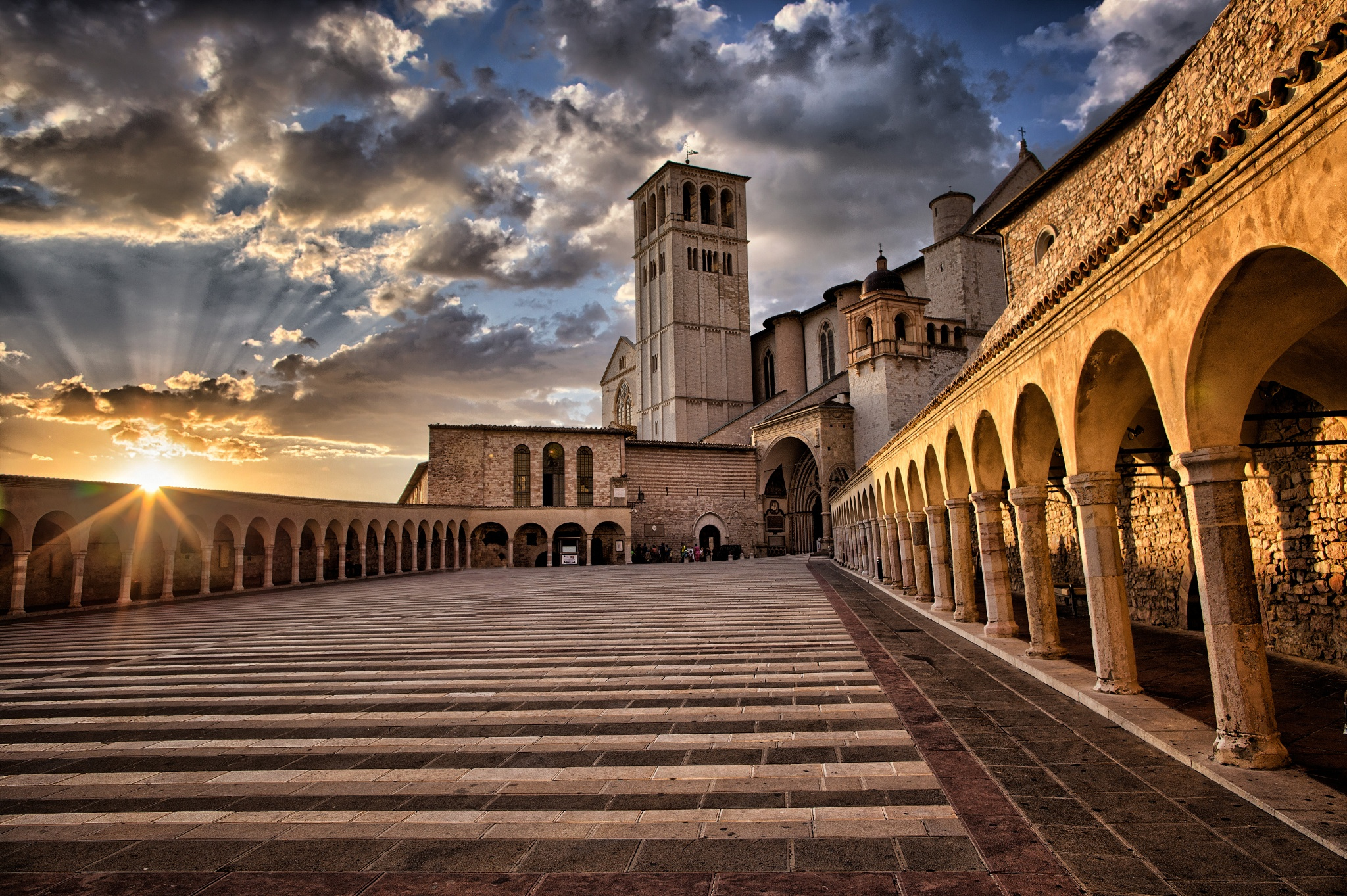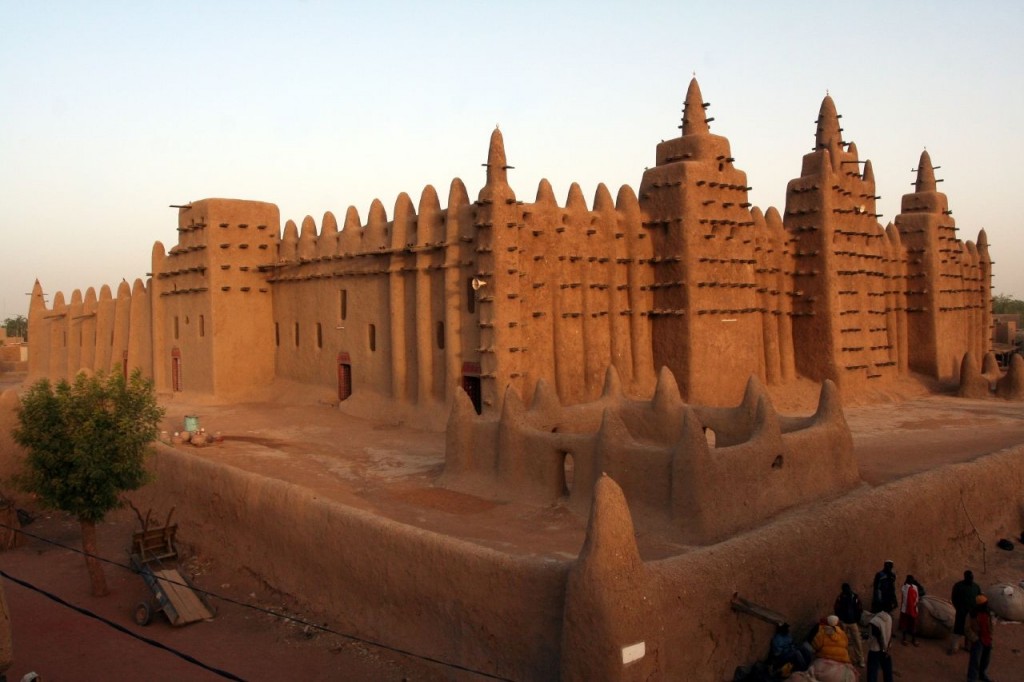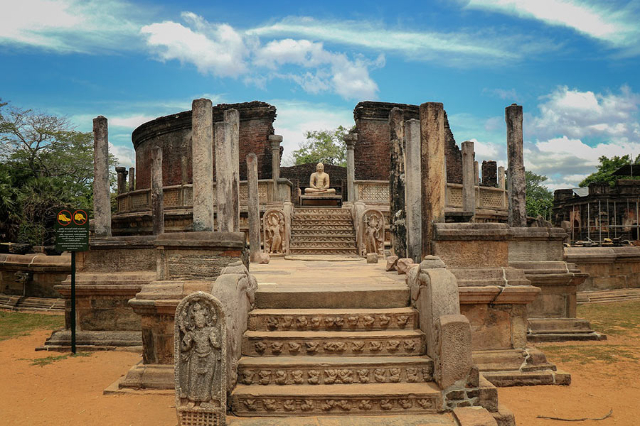With the development of Etruscan culture, this valley also knew the customs and cults of this people,in fact some historians trace the origin of the name "Norcia" to the goddess Nortia (the Etruscan goddess of fortune) much venerated in these areas.
The expansion of the kingdom of the Sabines, made Norcia the northernmost village controlled by them, and the first urban center was formed, located in the area now called "head the land." Like every Sabine agglomeration, it was without city walls, dedicated by the Sabines to the open-field defense of their cities.
In the Enid, Virgil identifies Nursia as the homeland of Ufente, leader of the militia against Aeneas, we can read in Book VII: "Et te montosae misere in proelia Nursae, Ufens,insignem fama et felicibus armis."
Rome conquered the town presumably in 290 B.C.,granted Roman citizenship to its inhabitants (268 B.C.), and incorporated them into the Quirina tribe (241 B.C.). During the Romanization the nursino – and the whole Valnerina – assume a relevant role thanks to the improvement of communication routes. The Roman conquerors, in fact, were concerned to improve the road system that would allow an easier connection to the Adriatic coast, probably readjusting old sheep-tracks used for transhumance.
Livy leaves us the first trace of Nursia in written history, in reference to the volunteers the city offered to Scipio during the Second Punic War (205 bc). For their support of Antony against Octavian in the Perugian war, the Nursia people were severely punished, proscriptions and confiscation of property severely affected Norcia’s economy. After being placed under the control of a prefect of Rome, Norcia retained its local organization and its magistracies , tried and tested for years in the town. It was home to Quintus Sertorius, a republican general, who distinguished himself by his conquests in the West, Spain and Gaul. L ‘nursina origin of Vespasia Polla, mother of Vespasian, meant that under the empire of the latter, Norcia experienced a flourishing period, and had a strong influence on the surrounding area, so much so that the area, made a Roman province, was given the name of " NursiaValeria ".
Tradition dates the advent of Christianity, in these lands, to the 3rd century by St. Feliciano, bishop of Foligno. However, not to be forgotten, is the evangelization action of the Syriac hermits established throughout the Valnerina in the fifth century.It is precisely in this period that the first bishop nursino appears.
According to Christian belief around 480 A.D. his most illustrious sons St. Benedict and his sister St. Scholastica were born in Norcia.
erso 572, the Lombards settled in Spoleto destroyed Norcia, which still maintained itself as Roman. Having subsequently lost its function as the hegemonic center of the mountains, the city was subjected to the guastaldate of Ponte.
n this early medieval period, before the deforestation of the mountain due to the agrarian autarky of the small communes, the nursini settlers used the acorn for grazing and raising pig herds. Farmers had thus specialized in the anatomy, milking, castration, and access care of pigs, and then sold the salted products to nearby towns. It was their trade that formed in Preci the proper terrain for them to learn with ease from the Benedictine monks of the Abbey of St. Eutizio connected with the Salerno school, the anatomy of the human body and the operations of lithotomy and herniotomy of the well-known "Surgical School," first as empiricists, then as professionals. Surgery hitherto practiced exclusively by the religious, in fact, following the Lateran Council of 1215, began to be practiced by local residents. About thirty families from Norcia and Preci thus handed down the healing and surgical art, gradually perfecting their operating techniques, thanks also to the aid of new instruments they themselves invented. Their fame soon crossed the borders of the peninsula and landed in various European courts.
he 1600s experienced, for the first half, a remarkable building and artistic renewal. Suffice it to say that, at the beginning of the century, Norcia, divided into 5 parishes, counted 3 men’s convents within the walls and 4 outside the walls, 6 monasteries of nuns, 4 hospitals, 8 confraternities with as many oratories, 10 colleges of the arts, 8 inns with lodging, about 100 churches in the district! There was also a marked artistic-cultural revival: good public schools, a theater, musical activity, a literary academy and much interest in the past flourished.
In 1809 Norcia became part of the French empire, but soon papal rule was restored and the ancient bishopric was also restored (1820).
l 1900 witnessed the emigration to America of about five hundred Nursini, while electricity arrived locally and the first Italian public steam car service was established. The two world wars, unfortunately, also cost Norcia a heavy toll of lives.
After 1979, demanding reconstruction and restoration work began, which, still in progress, is returning one of its most precious jewels to Umbria.
